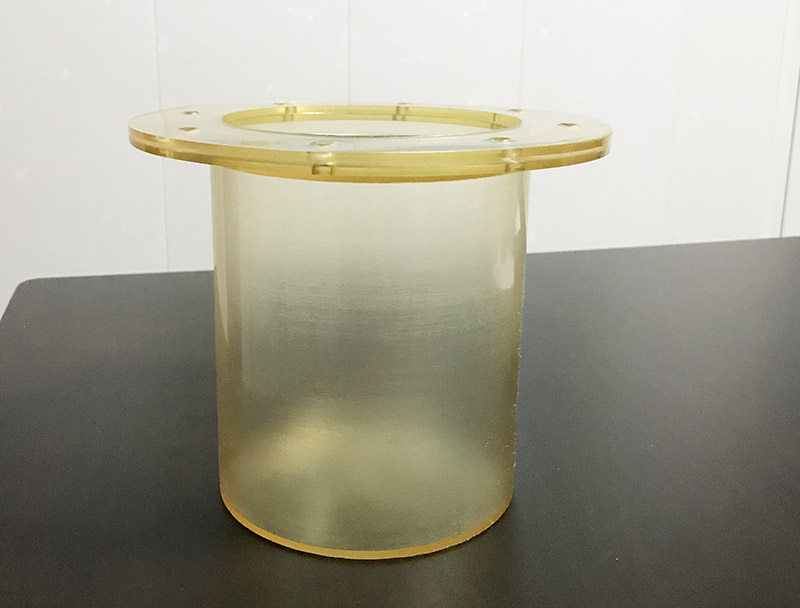

Forming of Refractory
Press forming method
Machine compression molding is currently the most widely used molding method in refractory production. This method uses a brick press and a steel mold to press the mud into a green body. Because general machine press molding refers to a semi-dry molding method with a water content of 4% to 9%, it is also called semi-dry molding. The equipment commonly used in this method includes friction brick presses, lever brick presses and hydraulic presses.
The machine press forming process is essentially a process of making the particles in the billet dense and the air discharged to form a dense billet. The machine-pressed adobe has the advantages of high density, high strength, small drying shrinkage and firing shrinkage, and easy control of product size, so this method plays a major role in the production of refractory materials. In order to obtain a dense green body during machine pressing, sufficient pressure must be given to the billet. The size of this pressure should be able to overcome the internal friction between the blank particles, overcome the external friction between the blank particles and the mold wall, and overcome the uneven pressure distribution caused by the moisture of the blank, the particles and their uneven filling in the mold. The proportional relationship between the three depends on the dispersion degree of the blank, the particle composition, the moisture content of the blank, the size and shape of the blank, etc. Although there are several theoretical formulas for calculating the relationship between the pressure and the densification of the green body, such as the logarithmic relationship between the pores of the green body and the pressure, etc., the unit product pressure required by the green body is usually determined approximately by experimental methods, and According to this, the total pressure that the brick press should have is determined.
Plastic molding method
The plastic molding method refers to the method of making a green body from the plastic mud with a water content of more than 16%. Usually, the prefabricated billet is put into the extruder, extruded into a mud strip, then cut, and then made into a blank according to the required size, and the blank is pressed by a re-pressing machine to make the blank have a specified size and shape. .
The plastic molding method is mostly used to produce large or particularly complex refractory products. Compared with the semi-dry method, its disadvantages are that the body has high moisture content, low brick strength, inaccurate dimensions, complicated drying process, and shrinkage sometimes reaching more than 10%. Therefore, in the production of refractory products, except for some products, it is generally very Less use of plastic molding method.
Grouting
The grouting molding method is a method in which mud is injected into a plaster model, and the green body is made by means of molding water absorption. The ways of grouting molding include hollow casting, solid casting, pressure casting, centrifugal casting, vacuum casting, etc., among which hollow casting is the most important casting method.
Isostatic pressing is a method in which equal pressure is applied to the mud in all directions for molding. The commonly used stress transmission medium is liquid, such as oil, water or glycerin. Because the compressibility of brake fluid or anhydrous glycerin is very small, almost all the pressure can be transmitted to the elastic mold, so these two liquids are often used as the pressure transmission medium.
Isostatic pressing
The most important feature of isostatic pressing is that each part of the clay is pressed evenly and at a high pressure, so that the green body obtained in this way has a high and uniform density, so that the deformation and shrinkage of the green body during the firing process are greatly reduced, and the pressure is not high. There will be firing cracks caused by the stress caused by the density difference of the green body formed by the general molding method. In addition, the pressurization operation of isostatic molding is simple, and the molding pressure is easy to adjust; the rubber or plastic mold for molding is easy to manufacture and low in cost. , can be used repeatedly; no or less temporary binder may be used in the mud. Isostatic pressing can be used to press large and slender products with complex shapes that are difficult to form by general molding methods, such as long nozzles, submerged nozzles, tuyere bricks, integral stoppers, etc.

Jiangsu High Industry on the research and development and production of high-performance polyurethane isostatic pressing molds. Through in-depth cooperation with many isostatic pressing equipment manufacturers and in-depth study of the industry, the developed isostatic pressing polyurethane mold series products have the characteristics of long service life, high precision, small deformation, easy demoulding, etc., and are widely used in ceramics, etc. Static pressing mould, cemented carbide isostatic pressing mould, rare earth permanent magnet material isostatic pressing mould, graphite isostatic pressing mould, etc.




We support all kinds of customization, if you need it, please contact us.
Phone/whatsapp:+86 18234744811
Email:sales@highindustryco.com
Polyurethane Products Pu Products Rubber Mold Plastic Mold